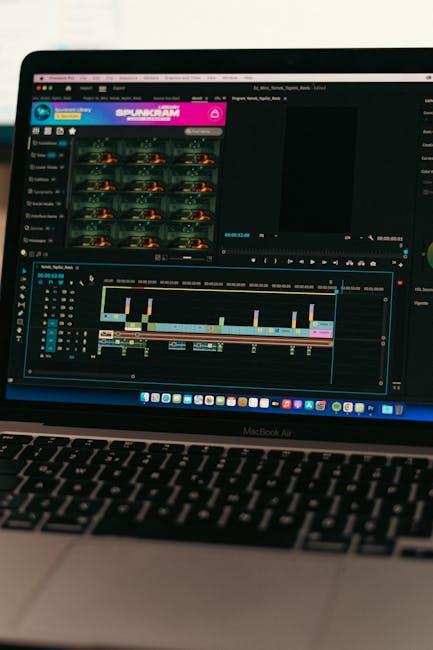How to Use Animation to Improve UX: A Comprehensive Guide
Animation has evolved beyond mere decoration. In the world of user experience (UX) design, animations are powerful tools that can significantly enhance user engagement, provide visual feedback, and guide users intuitively through digital interfaces. This article explores how to use animation to improve UX effectively, alongside best practices, benefits, and practical tips that designers and developers can implement. Whether you’re a UX beginner or a seasoned pro, this guide will help you unlock the true potential of animation in creating delightful user journeys.
Why Animation Matters in UX Design
Animations, when deployed thoughtfully, make interfaces feel more responsive, alive, and understandable. They bridge the gap between a user’s actions and system responses, creating a smooth and immersive experience. Here are some reasons why animation matters in UX:
- Improves User Guidance: Animations can direct attention to important elements, enhancing usability by clarifying navigation paths or interface changes.
- Provides Functional Feedback: Visual cues like loading spinners or button state changes reassure users their actions were recognized.
- Creates Emotional Connection: Well-crafted micro-interactions make experiences feel more natural and enjoyable, increasing user satisfaction.
- Reduces Cognitive Load: Smooth transitions and progressive disclosure help users process changes seamlessly without feeling overwhelmed.
Benefits of Using Animation to Improve UX
Understanding the clear benefits of UX animation helps justify its inclusion in your design workflow. Here are key advantages:
- Enhanced Engagement: Dynamic interfaces capture and hold user attention.
- Increased Clarity: Motions make interactions and system status clearer.
- Better Navigation: Animated cues guide users effectively, reducing frustration.
- Improved Accessibility: Thoughtful animations can assist users with cognitive disabilities by emphasizing important features.
Practical Tips for Using Animation to Improve UX
To maximize the positive impact of animation on user experience, adhere to these practical tips and best practices:
1. Keep it Purposeful and Meaningful
Don’t animate just for the sake of it. Every animation should serve a clear purpose, such as indicating status, providing feedback, or enhancing comprehension.
2. Prioritize Speed and Timing
Animations should be fast enough to keep up with user expectations but slow enough to be noticed. Ideal animation duration typically ranges between 200ms to 500ms.
3. Use Subtle and Consistent Animation Styles
Maintain a consistent animation style across your product to avoid confusing users. Subtlety avoids distraction while still communicating effectively.
4. Incorporate Micro-Interactions
Small animations-for example, a button subtly changing on hover-can dramatically improve the intuitiveness and feel of your design.
5. Ensure Accessibility and Reduce Motion Impact
Provide options to disable or reduce motion for users with vestibular disorders. Respect user preferences and test animations with accessibility in mind.
6. Optimize Performance
Heavy animations can slow down performance, especially on mobile. Use hardware-accelerated CSS animations and optimize assets for the best experience.
Common Types of UX Animations and Their Use Cases
Here’s a quick overview of common animation types used in UX, with practical applications:
| Animation Type | Purpose | Example Use Case |
|---|---|---|
| Loading Spinners / Progress Bars | Indicate system is processing or loading | Page load, file upload progress |
| Transition Effects | Smoothly switch between views or states | Menu sliding, modal popping up |
| Micro-Interactions | Provide feedback on user actions | Button hover animations, input validation |
| Animated Icons | Communicate meaning visually | Animated hamburger menu transforming into close button |
| Parallax Scrolling | Add depth and engagement | Landing pages with layered backgrounds |
Case Study: Animations Improving UX in Popular Apps
Let’s take a look at how some well-known brands have successfully used animation to elevate their UX:
Example #1: Airbnb
Airbnb uses subtle but effective animations when users search for listings. Loading states are animated smoothly, and map interactions include transitions that guide users’ focus without overwhelming them. This reduces perceived wait times and enhances clarity.
Example #2: Slack
Slack leverages micro-interactions extensively-the “send” button animates on click and message notifications use gentle blinks or fades. These small animations make communication feel instant and satisfying.
Example #3: Medium
Medium’s smooth scrolling animations and fade-ins ensure users remain focused on reading content comfortably without abrupt changes, improving readability and overall engagement.
SEO Best Practices When Writing About Animation in UX
To help your content rank well when covering topics like best UX animations or animation in UI design, keep in mind:
- Use relevant keywords naturally throughout headers and paragraphs.
- Include descriptive meta titles and meta descriptions with targeted keywords.
- Break up content with semantic HTML (H1, H2, H3) for easy scanning.
- Incorporate tables or lists to improve readability and engagement.
- Link to authoritative sources or examples for credibility.
Conclusion
Animation in UX is far more than eye candy – it’s a vital communication tool that helps users understand, engage, and enjoy digital experiences. When used with intention, animation improves clarity, provides essential feedback, and crafts emotional connections that keep users coming back.
By following practical tips on animation timing, purpose, and accessibility, designers can create dynamic yet user-friendly interfaces that improve both user satisfaction and business success. Start experimenting with thoughtful animations today and watch your UX come alive!
For more insights on effective UX design, explore our other articles and stay tuned for the latest in interactive design trends.











